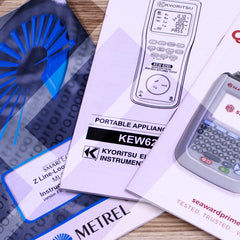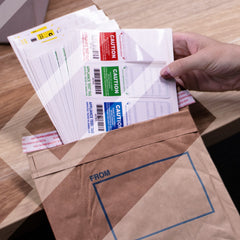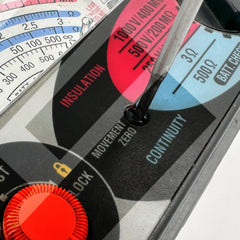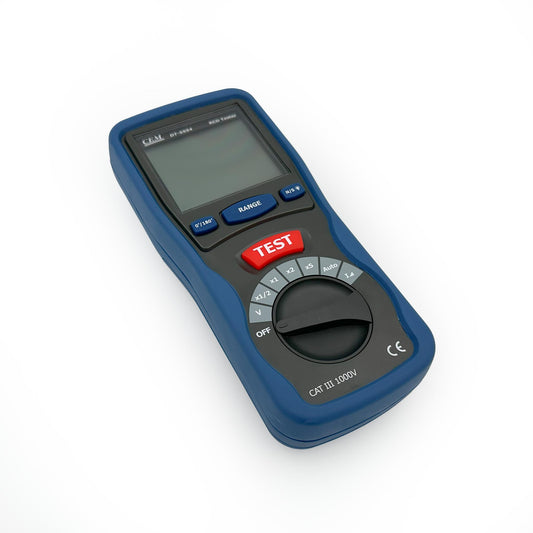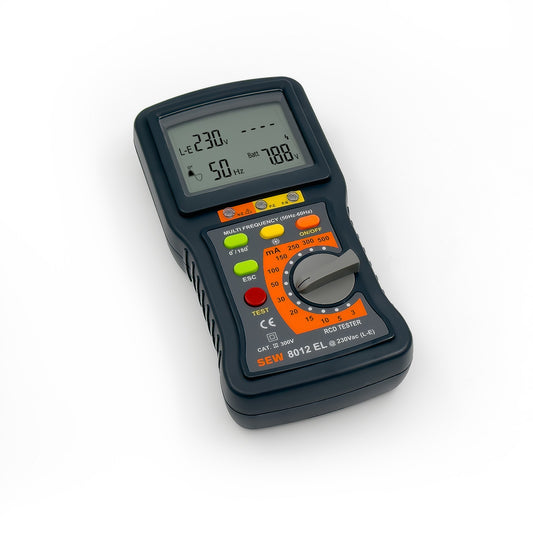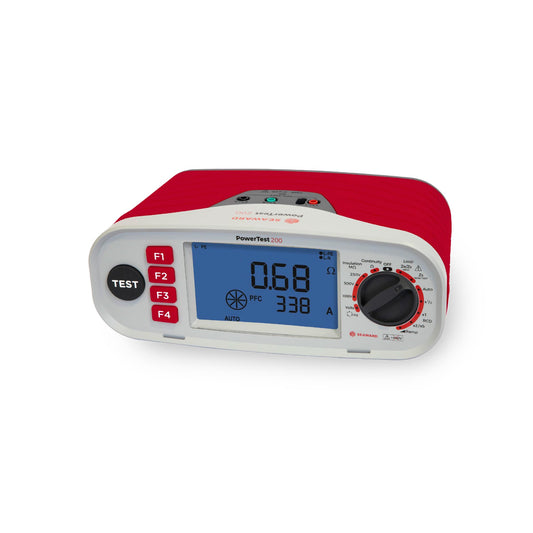RCD testers and appliance testers with RCD trip facilities simulate a current leakage fault and accurately measure the time it takes for the RCD to cut power. This test is known as an RCD trip time test.
The trip time recorded determines if the RCD complies with the requirements of AS/NZS 3760:2010. Trip times may need to be as low as 40 milliseconds, necessitating highly accurate equipment.
The most commonly used RCD test, as specified in AS/NZS 3760:2010, involves a trip time test at the rated current of the RCD. This means a fault is applied at the RCD’s rated current. Typically, RCDs are sensitive to 30mA, although 10mA sensitive RCDs are sometimes used in medical settings, and variable trip current RCDs may be present in other specific applications.
How an RCD Tester is Commonly Used
While accurate, RCD testers are relatively simple to operate. AS/NZS 3760 requires that users of this equipment be deemed ‘competent’, and many TAFE and private courses offer training for competency in testing and tagging.
Most RCD testers have standard Australian three-pin plug leads, allowing them to be plugged directly into a mains power supply. From there, the switchboard or power socket RCD can be tripped by selecting the appropriate current and pressing the test button. Portable RCDs can also be tested similarly, though an isolation transformer may be required.
During testing, the RCD tester applies the fault condition and measures the time taken for the RCD to trip. Power is cut to circuits protected by the RCD during this process, so caution is essential. The trip time determines whether the result is a PASS or FAIL.
RCD Testers with Probes or Test Leads
Some RCD testers come with probes instead of a three-pin plug. These probes can be used in power outlet sockets or at the switchboard for trip time measurements. This type of tester is frequently used for three-phase RCDs and is typically suited for qualified electricians.
All RCD testers provided by Test and Tag Supplies are supplied with a three-pin plug. In some cases, test leads and probes are also included.
Switchboard Testing and Category Ratings
Many electricians prefer testing RCDs at the switchboard instead of at power outlets. While this method does not verify the integrity of the RCD’s operation at the outlet, it can be more time-efficient.
Dedicated RCD testers for switchboard testing often include suitable test leads. Importantly, any test equipment connected directly to a switchboard should have a category rating of at least CAT III. This ensures the device can handle electrical transients like overvoltage or voltage spikes, in accordance with IEC 61010.1 standards.
Appliance testers with integrated RCD testing facilities are generally CAT II rated and unsuitable for direct connection to switchboards. Attempting such a connection may damage the equipment and compromise user safety.
Current Ranges
Most RCD testers offer a range of tripping currents, typically from 5mA to 500mA or higher. A 30mA setting is essential for testing most RCDs. Additional features like ‘1/2 trip’ and ‘fast trip’ allow testing under different conditions.
Tripping Angle
RCD testers should include selectable tripping angles, which indicate whether the fault is applied at the 0-degree (current rising) or 180-degree (current falling) crossing points. Most RCD testers offer 0- and 180-degree selectable angles.
Ramp Current Testing
Ramp current testing involves applying an increasing current leakage fault to determine the RCD’s sensitivity threshold. For instance, a 30mA rated RCD should typically trip at about 75% of its rated current. If a 30mA RCD trips at 13mA during a ramp current test, it may be overly sensitive and potentially faulty.
Although ramp current testing is not required under AS/NZS 3760:2010, it is useful for fault-finding purposes.
Recording RCD Testers
Some RCD testers offer recording capabilities. While this feature may seem attractive, consider whether it will be genuinely useful. Many recording appliance testers allow users to record data such as site, location, and description. However, dedicated recording RCD testers typically record only time, memory position, tripping angle, current, and trip time, without contextual details such as location or description.
Metrel installation and RCD testers available through Test and Tag Supplies can record data at various levels of an installation structure (e.g., Objects, Blocks, and Fuse levels).
Integrated RCD Testers
Integrated RCD testers, like those in the Metrel 3309, PAC3760DL, Seaward PT300, Primetest Elite, and Trisan S8 DL models, offer portability. However, they may lack the functionality of dedicated RCD testers, such as adjustable tripping currents. Assess your specific needs before deciding.
Low-Cost RCD Testers
Some low-cost devices marketed as RCD testers may only deliver a current leakage fault to determine if an RCD trips but cannot perform trip time tests required under AS/NZS 3760. Ensure the device meets your compliance needs before purchasing.
Trip Current Electronics
RCD testers create a fault current by generating an imbalance between active and neutral conductors. Lower-cost testers may use resistors, while advanced models use constant current circuitry to maintain accuracy regardless of supply voltage.
Portable RCDs and Isolation Transformers
Testing portable RCDs requires simulating a current leakage fault under normal operating conditions (connected to 240V AC power). If a portable RCD is connected to a circuit already protected by a fixed switchboard RCD, an isolation transformer is needed to prevent the fixed RCD from tripping during the test. Isolation transformers designed for RCD testing create a barrier between the portable and fixed RCDs.
Calibration
Like all test equipment, RCD testers require regular calibration to ensure accuracy. Calibration should be performed by an authorised agency to a nationally recognised standard, typically annually or as recommended by the manufacturer.
In Queensland, electrical safety regulations require testing instruments to be verified every six months if they cannot be visually confirmed as functioning correctly. Records of these tests must be kept for at least five years.
Important Information
Test and Tag Supplies Pty Ltd makes its website available for informational purposes but assumes no duty of care. The company does not provide professional advice and does not guarantee the accuracy, reliability, or timeliness of information on its website or linked sites.

